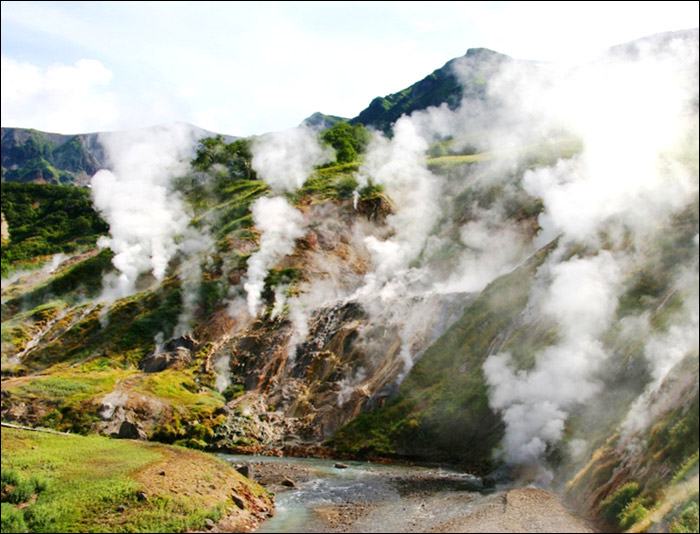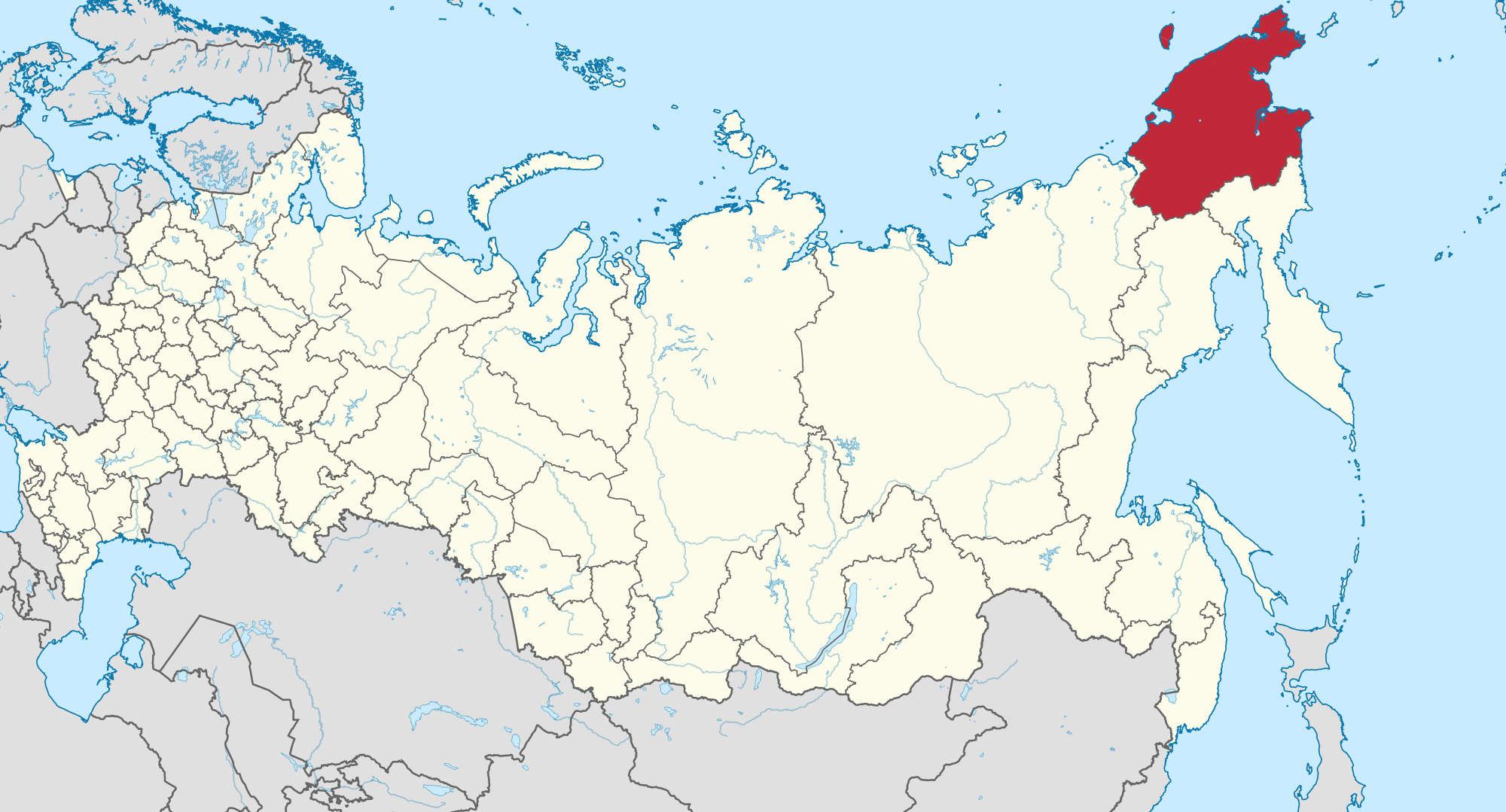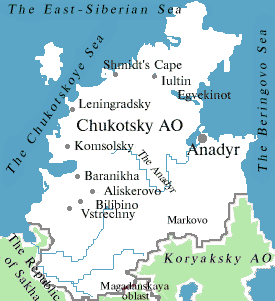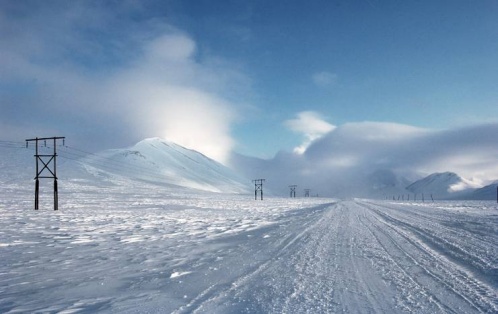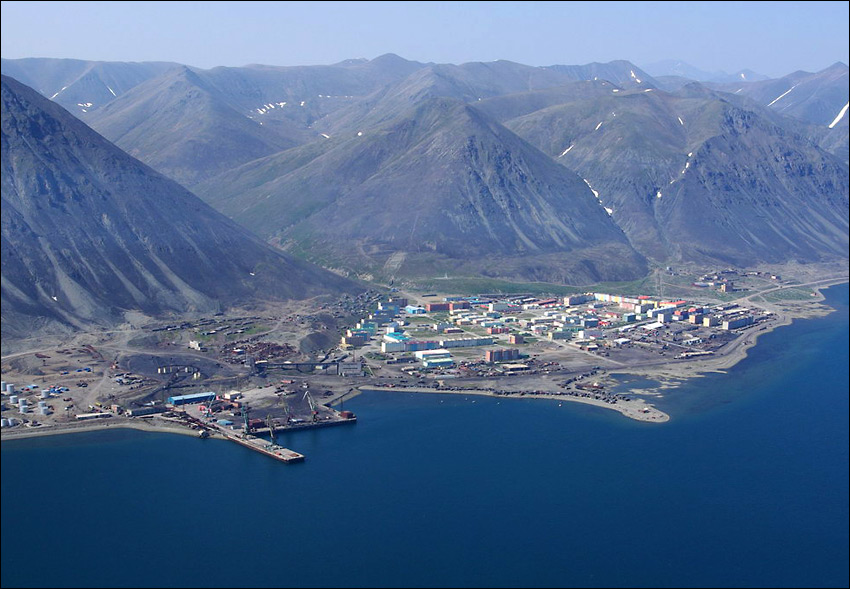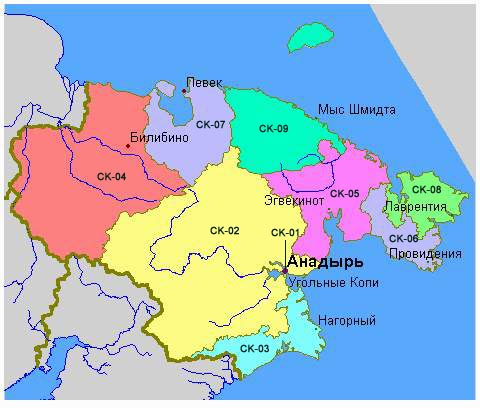Chukotka Autonomous Okrug
67175Koordinaten: 67 ° 0 ' N, 175 ° 0' O
The Autonomous District of the Chukchi (Russian Чукотский автономный округ / Tschukotski awtonomny okrug, Chukchi Чукоткакэн автономныкэн округ ), also called Chukotka, is an administrative unit ( Autonomous District ) in Russia.
Geography
Chukotka includes the extreme north- east of Russia. It is separated by the Bering Strait from Alaska. The surface is mostly mountainous and has a highland region. On the coasts there are more or less extensive lowlands (eg, the Chaun lowlands). The highlands are expected to East Siberian Uplands. They include, among others, the northern part of Korjakengebirges, the Anjuigebirge, the Anadyrgebirge to the Chukchi Peninsula, where the easternmost point of Russia and Asia is located in Cape Deschnjow. The group also includes several major islands, such as the UNESCO World Heritage landscape Wrangel Island and the island of Aion.
The circle is almost entirely north of the tree line and is covered by tundra. In the higher mountain regions, it turns into a frost rubble desert. Only in the southernmost areas of the circle you will find low-growing trees in sheltered areas.
The climate is rough. The annual average temperature ranges from -5 to -10 ° C. Winter starts in September and ends in May. The warmest month is July with about 9 ° C, the coldest January with -25 ° C, minimum temperatures of below -40 ° C are possible. Storms are possible in every season and often reach hurricane strength.
Population
Chukotka is populated remote and extremely thin. As a result of the decline of gold mining has since 1989 almost 70 % ( from 1989 to 2010: -69.2 %) of its inhabitants, especially the Russians, lost through emigration to Central Russia. The earlier well-represented immigrant groups of Ukrainians, Belorussians and Tatars have moved away in droves. The indigenous ethnic groups are, however, as in most areas of Siberia and the Far East, still in the minority.
The following table shows the time evolution of the total population and its composition by nationality:
Administrative divisions
Today's administrative division into an urban district and six Rajons has existed since 2008, when on May 30 the former Rajons Iultin and Schmidtowski ( with the Wrangel Island ) for Rajon Vostochny ( " Ostrajon ") and the Rajons Anadyrski and Beringowski to Rajon Zentralny ( " Zentralrajon " ) were combined. On 18 November 2008, the two Rajons the names were again each one of the old Rajons: the Ostrajon was to Rajon Iultin and Zentralrajon to Rajon Anadyr.
The Rajons are subordinated to a total of 7 urban and 37 rural communities.
Notes:
Cities and urban settlements
In the Chukchi Autonomous District, there are three cities ( * ) and five urban-type settlements.
The in the 1990s, still existing urban settlements (mainly mining settlements ) Aliskerowo, Baranicha, Iultin, Komsomolski, Krasnoarmeiski, Leningradski, Schachtjorski, Walkumei and Wstretschny have since been abandoned by its inhabitants, and thus become ghost towns.
History
The Russian colonization began in the 17th century against fierce opposition from the Chukchi, which lasted until the early 20th century. In 1930, the Autonomous District was established.
Policy
In December 2000, Roman Abramovich was elected with 92% of all votes to the new governor and confirmed in October 2005 in this office. He began self-funded food, prefabricated houses from Canada and fuel to ship in the Autonomous District. While Abramovich enjoyed among the local population due to these measures high popularity, secured his position by London-based oligarchs protection from prosecution (political immunity). But in the new Russian press reports about the richest man in the country, it also means often that the then-President Vladimir Putin had asked him to take care of in this way to the underdeveloped region. Only the paid annual taxes from the regional budget Abramovich would exceed many times over. In July 2008 Abramovich stepped down as governor of Chukotka; Roman Kopin as successor was appointed.
As a border with the United States Chukotka is to travel for foreigners only with special permission. This must be granted by the Governor.
Economy
The most important industry is still the gold mining, although this has declined in recent years. The ongoing investment by Kinross Gold, a Canadian mining company, are likely to lead in the next few years again to an increase in gold production. The traditional sectors of the Chukchi and other indigenous ethnic groups are reindeer herding, fur trapping and hunting of marine mammals.
Culture
One of the few known abroad intellectuals was born in 1930 and died in 2008 Uelen writer Yuri Rytchëu, whose works give an idea of the lives of indigenous peoples.

